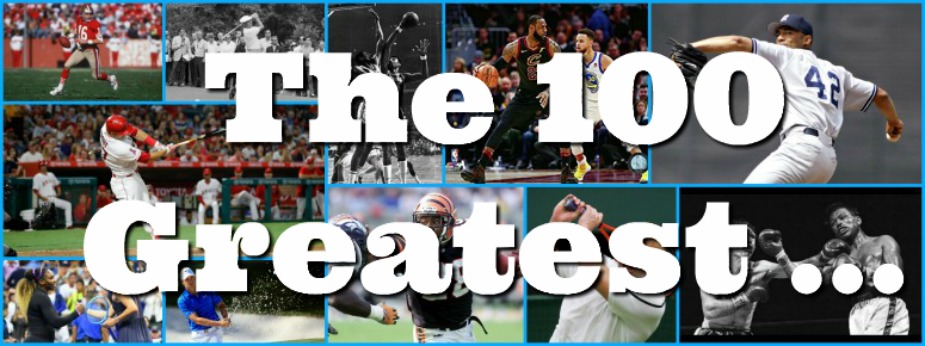
There are two positions in football where passion really comes into play -- quarterback and halfback.
Chicago fans take it as a personal affront if you argue that anyone was better than Walter Payton.
Detroit fans who watched Barry Sanders carry a mediocre team to winning seasons most of his stellar career can not believe anyone could be better.
Dallas fans like to point to Emmitt Smith's records, yards, touchdowns, and the fact that the Cowboys won relentlessly with him in the backfield.
So which is it? The overall play of Payton? The wow factor of Sanders? Or the lead horse in one of the best teams ever put together?
Rank, player, years, points
1. Emmitt Smith, 1990-2004, 25873.5
2. Walter Payton, 1975-1987, 25583.5
3. Marshall Faulk, 1994-2005, 24782.4
4. Barry Sanders, 1989-1998, 24535.2
5. Thurman Thomas, 1988-2000, 24154.5
6. Marcus Allen, 1982-1997, 23791.3
7. Lenny Moore, 1956-1967, 22937.2
8. Tony Dorsett, 1977-1988, 22675.4
9. Franco Harris, 1972-1984, 22517.3
10. Leroy Kelly, 1964-1973, 21834.9
11. Ladainian Tomlinson, 2001-2007, 21661.4
12. O.J. Simpson, 1969-1979, 21312.6
13. Eric Dickerson, 1983-1993, 21240.5
14. Steve Van Buren, 1944-1951, 21009.7
15. James Brooks, 1981-1992, 20602.4
16. Frank Gifford, 1952-1964, 20324.9
17. Edgerrin James, 1999-2007, 20301.9
18. Chuck Foreman, 1973-1980, 20266.3
19. Curtis Martin, 1995-2005, 20028.2
20. Earl Campbell, 1978-1985, 19727.4
My earliest memories of a great running back was Earl Campbell. I was shocked he finished so low. But his career went south early and the Oilers didn't score him a lot of points with wins and points.
O.J. Simpson was another one who I thought would finish higher. The Bills for most of his career were terrible and they didn't use Simpson much as a receiver.
Team success certainly carried Franco Harris higher than most would put him.
But let's look at the top five. Sanders at No. 4 seems low but he chose to walk away from the game rather than set records. That hurt him when compared to Smith. Team success gave Smith the edge over Payton and Faulk's central role in one of the greatest offenses helped as well.
Let's look at how the career stats helped Smith.
Best 3-year average:
1. Marshall Faulk; 2. Emmitt Smith; 3. Thurman Thomas; 4. Walter Payton; 5. Chuck Foreman. Sanders is seventh because his teams didn't go deep into the playoffs. All the guys in the top five played in Super Bowls.
Best 6-year average:
1. Emmitt Smith; 2. Walter Payton; 3. Barry Sanders; 4. Marshall Faulk; 5. Thurman Thomas. You see Sanders' year-in, year-out greatness start to come to the front.
Best 10-year average:
1. Walter Payton; 2. Barry Sanders; 3. Emmitt Smith; 4. Marshall Faulk; 5. Thurman Thomas.
Best career scores:
1. Emmitt Smith; 2. Walter Payton; 3. Marcus Allen; 4. Marshall Faulk; 5. Barry Sanders. Sanders finished nearly 700 points behind Smith in this category.
When Sanders retired he was 31 years old. For many running backs, that's when they begin to slow down. So to expect him to maintain the level he was playing at in his 20s perhaps is unrealistic.
But as a 30-year-old, Sanders gained 1,491 yards on 343 carries. That's 4.3 yards per carry and 93.2 yards per game. The Lions could have spelled him more. Perhaps cut his carries to 250 and use him more in the passing game. He had at least 3,000 yards still in the tank. That would have pushed him to No. 2 and perhaps No. 1.
But that didn't happen and he's No. 4 in my book.









